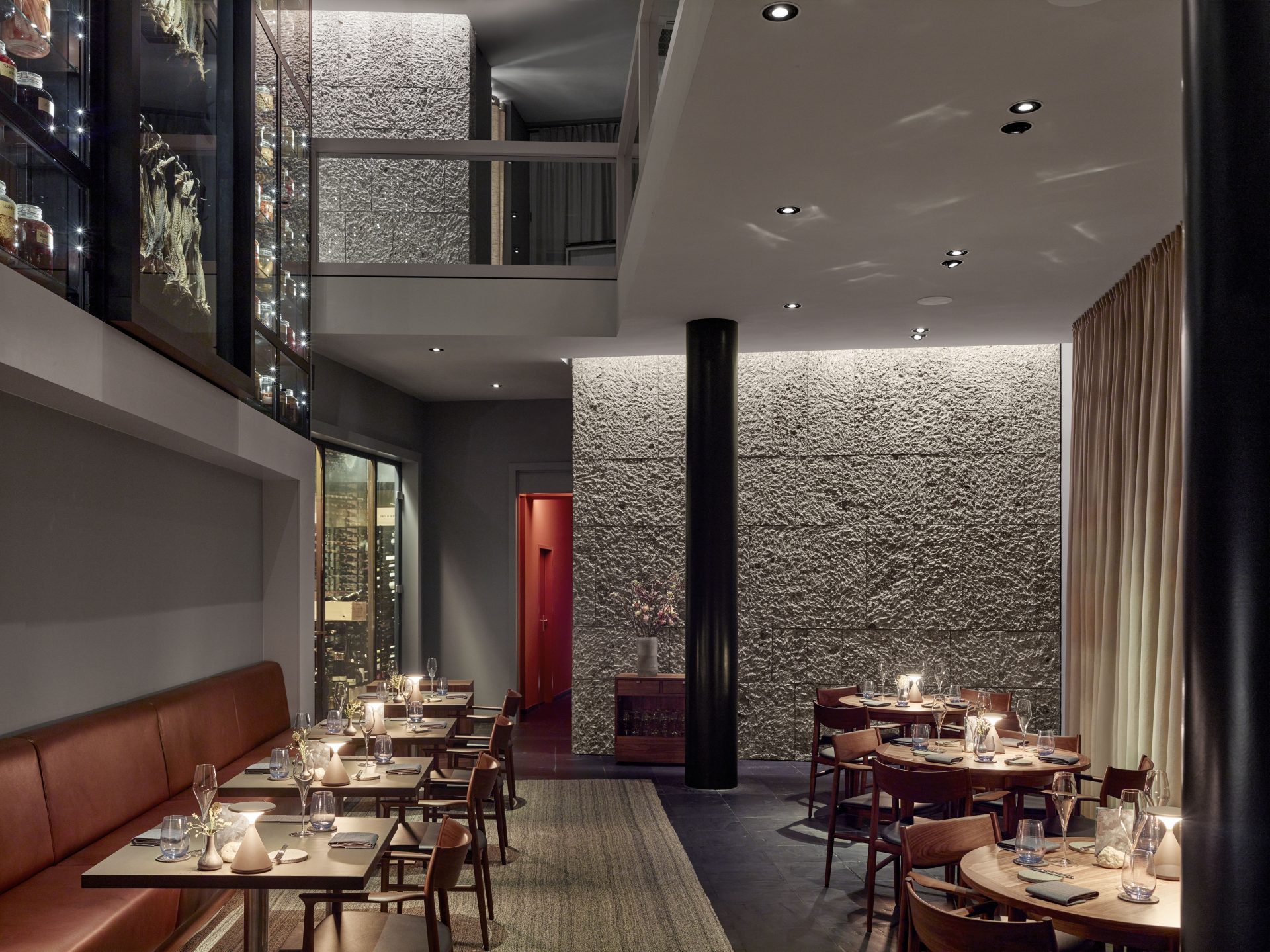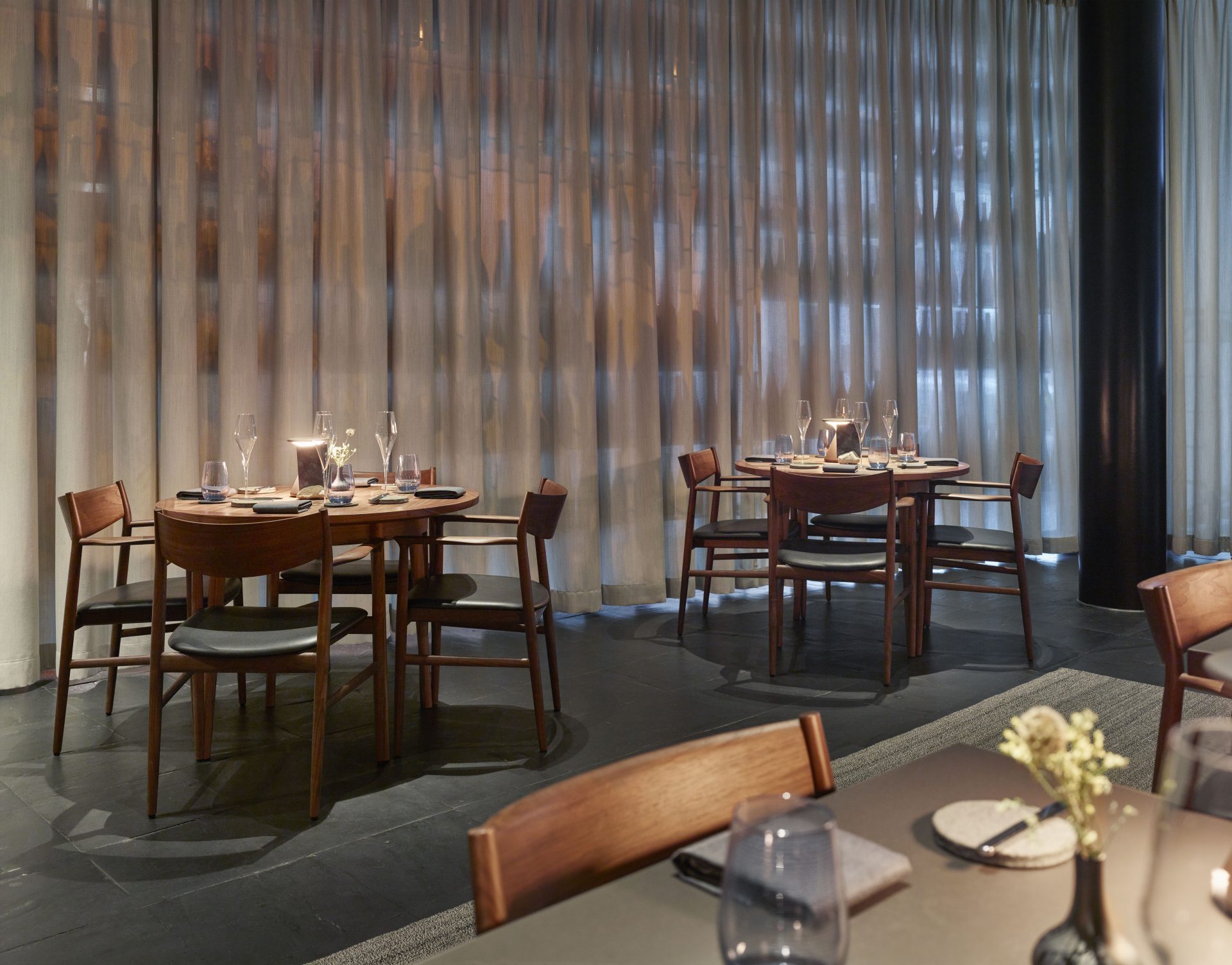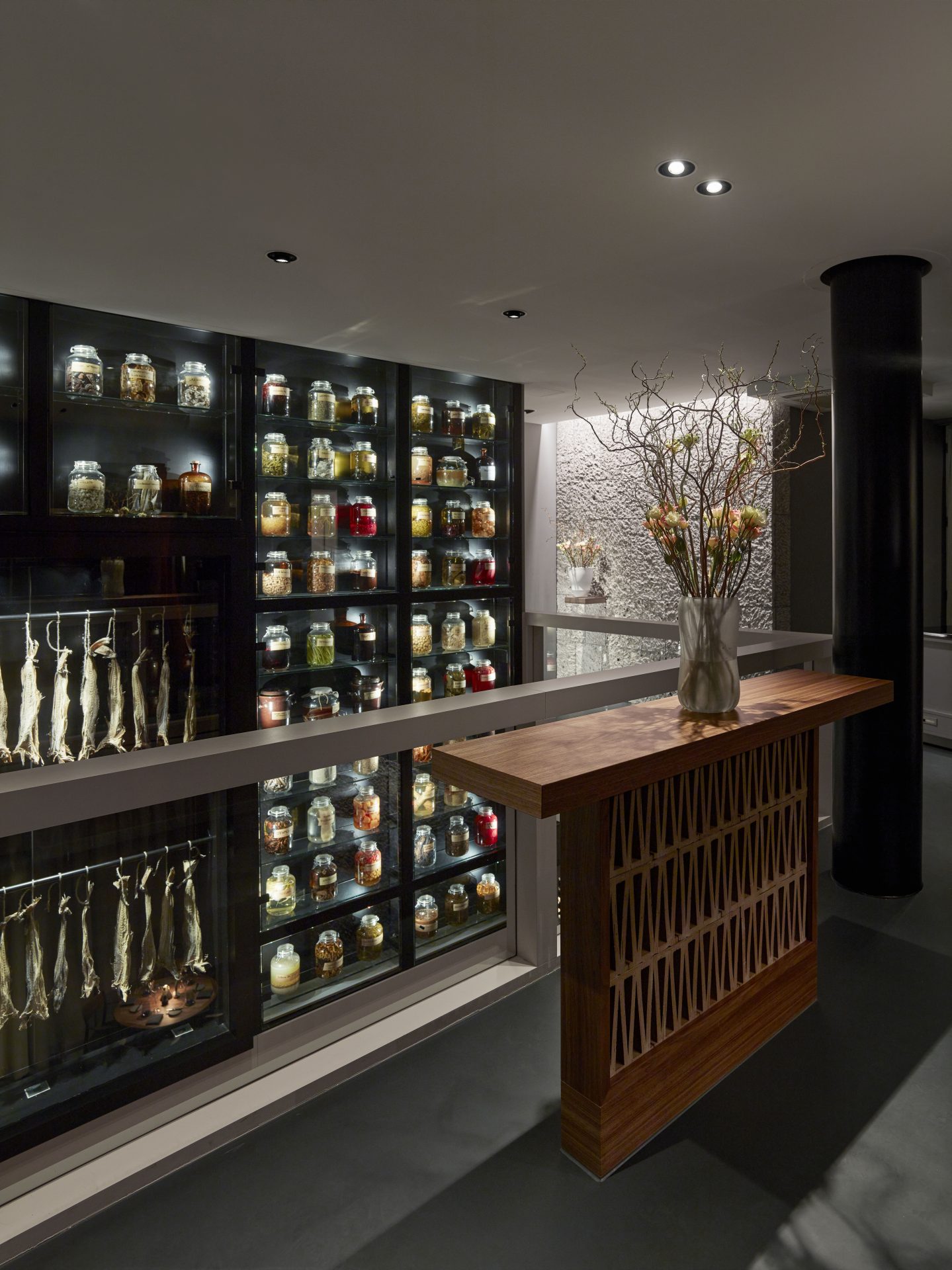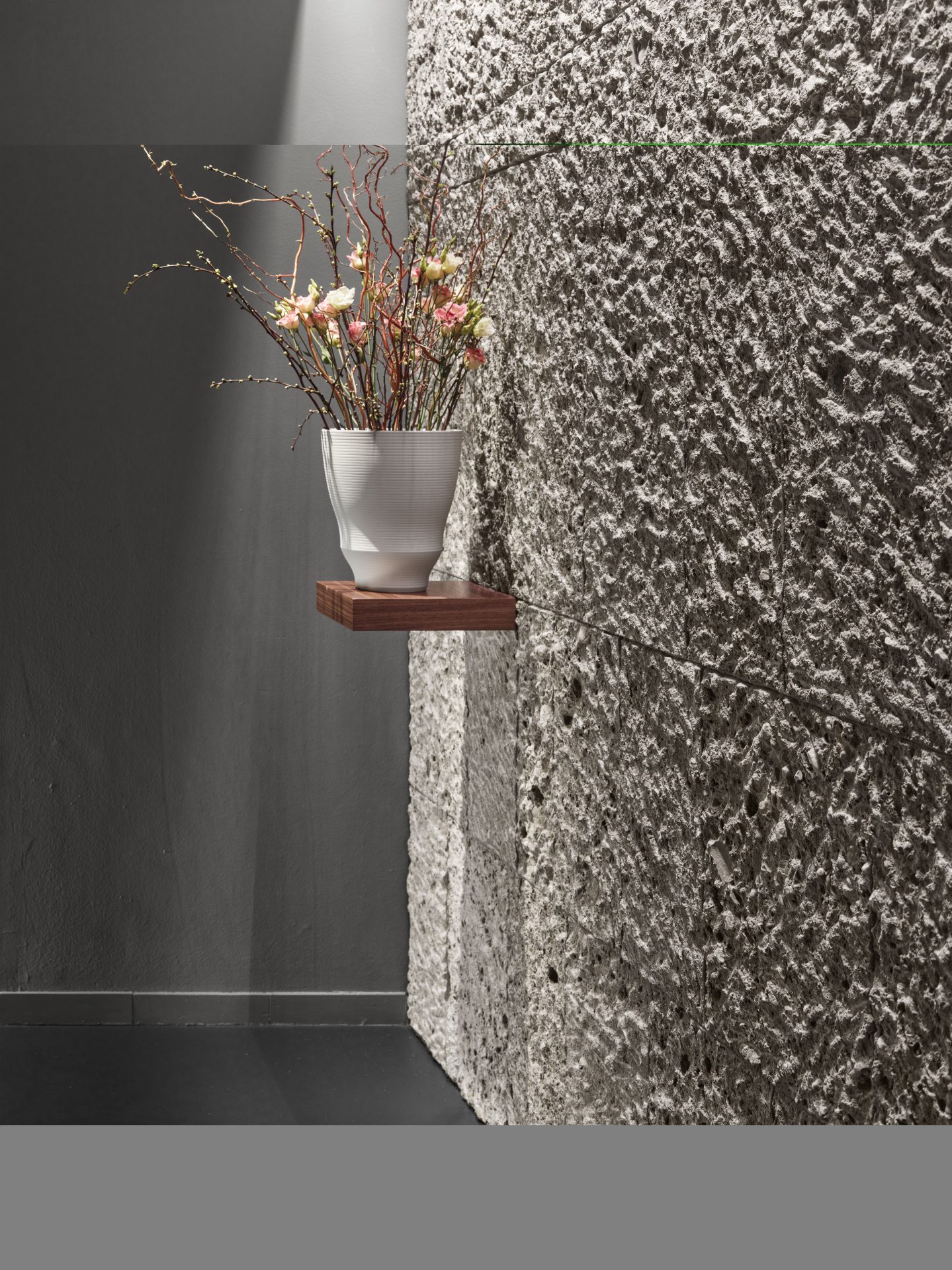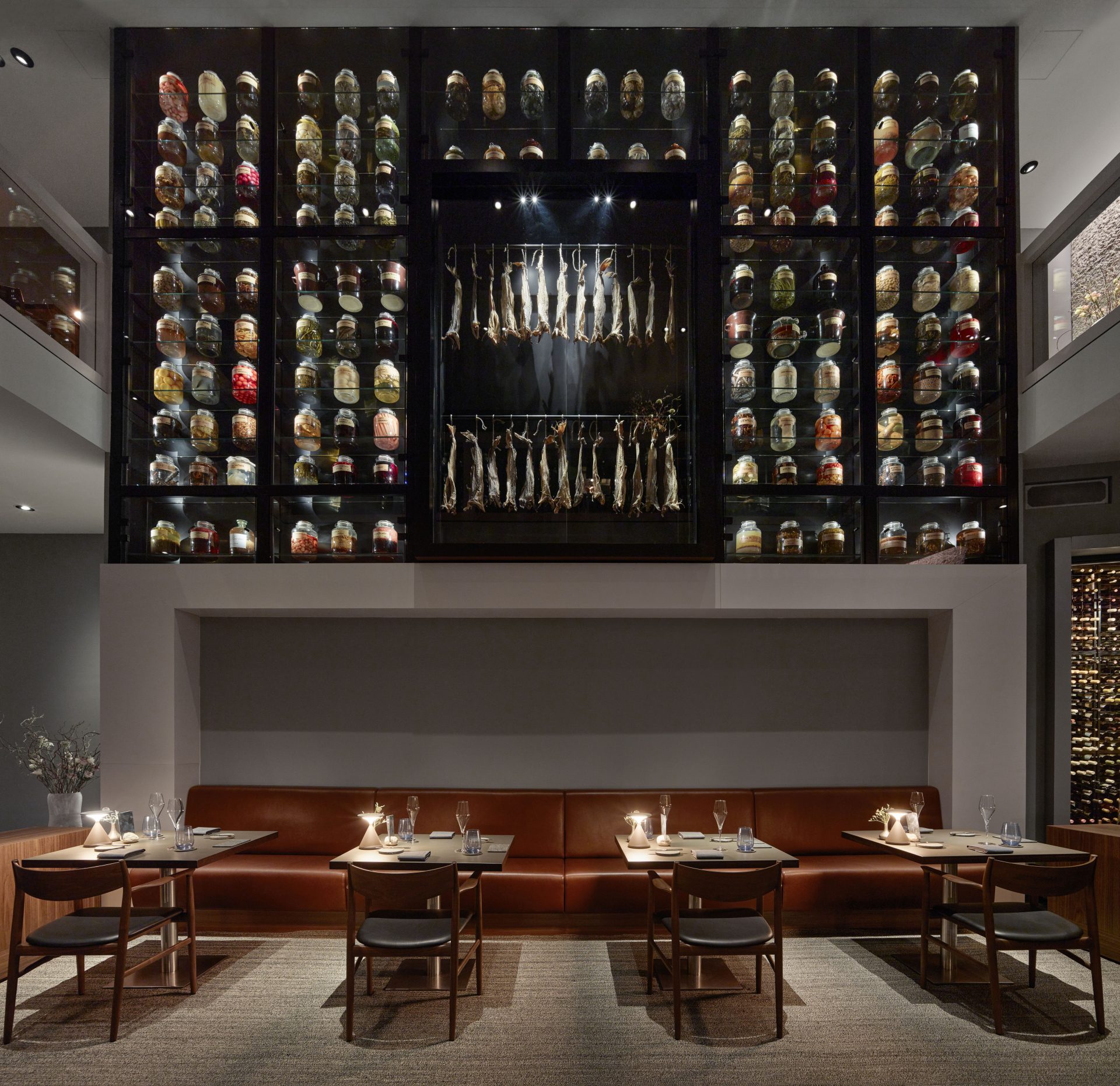
RUTZ RESTAURANT
First-class Ambience in Atmospheric Light – The Rutz Restaurant in Berlin
The Rutz Restaurant in Berlin has been awarded three Michelin stars since 2020, making it an unprecedented authority among gourmet dining addresses in the capital. After initially opening as a wine bar in 2001, the Rutz saw a sensational reopening in 2022 after around two months of extensive renovations to mark the restaurant’s 21st birthday. In the shortest possible planning period and in close cooperation with the Berlin architectural firm Weinmiller Großmann and the owners of the Rutz, we developed a lighting concept of the highest quality, which functionally as well as aesthetically supports the finesse and first-class nature of the space in an atmospheric way. The high-quality interior design is highlighted with a harmoniously integrated lighting concept, which provides visitors with individual lighting atmospheres for different occasions.
Since the successful reinvention of the restaurant on Chausseestraße, chef Marco Müller has been implementing his culinary visions in the newly designed interior. Because both the demand and especially the kitchen performance had outgrown the original ambience in the last years, the redesign created a high-end environment appropriate to the restaurant’s service, cuisine, and the guests it welcomes. With regard to the lighting, the focus was on a concept with the highest quality in order to underline the high-end nature of the furnishings, materials, and food in equal measure. The challenge here lay primarily in the tightly scheduled planning and implementation period and the associated short-term availability and procurement of the planned lighting elements.
The centerpiece of the restaurant is the six-meter-high vitrine, which extends almost monumentally as a display case over two floors of the interior and is visible from all seats. Here Marco Müller presents his favorite ingredients in preserving jars, reflecting the expected diversity and exquisiteness of his cooking. Individually aimable points of light are invisibly integrated into the vertical edges of the display case, allowing the colors and materiality of various ingredients to be highlighted. In this way, visitors’ attention is intuitively directed to the central showcase from all angles of the room. Through the use of adjustable downlights placed individually or paired above the tables, the food is highlighted by direct and focused light, while providing appropriate zoning of the space in a private lighting atmosphere. Brilliant light with very high color rendering was essential in the choice of luminaires to adequately set the scene for the food. A pleasant and differentiated atmosphere is also provided by diffuse table luminaires, which softly fade in the faces of the guests and create an intimate atmosphere at the tables.
Downlights are also used for ambient lighting in the other areas of the restaurant and are adapted to the various room heights and usage scenarios by means of three different beam angles. While narrow-beam, focused lighting was implemented on the tables, uniform light with wider light distribution ensures good orientation in the circulation areas.
During the extensive redesign of the Rutz, although many structural changes occurred, some elements such as the window-side wine rack facing the arcade, have been retained and harmoniously integrated into the new concept. The incident daylight is filtered through a semi-transparent curtain so that the shelf lined with numerous wine bottles casts interesting shadow drawings on the back of the textile and is reminiscent of the tradition of the original wine bar. In the evening hours, the surrounding urban space can be felt through the shadowy movements.
On both levels of the restaurant, rooms for service have been created behind hewn natural stone walls. The distinctive rough texture is gently accentuated by grazing light and the relief casts natural shadows, providing a pleasant visual backdrop.
All lighting elements have a color temperature of 2,700 K and are dimmable, generating unique moods within the restaurant using variable brightness levels, allowing the space to be used for different events and circumstances.
